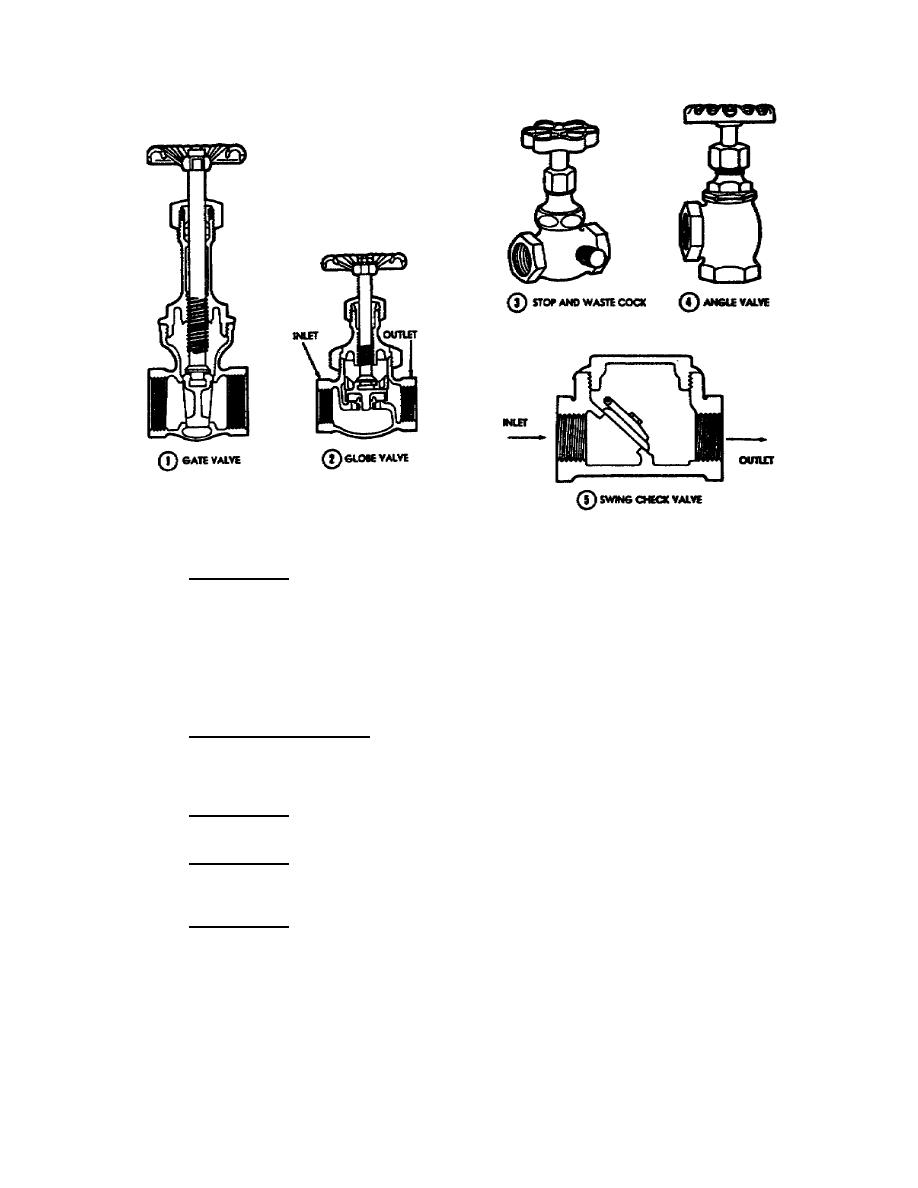
Figure 9, Types of valves.
(2) Globe valve. Outwardly, a globe valve (2, fig 9) looks like a gate
valve but inside it is made quite differently. Partitions block the flow through
the valve; and the seat, which is at right angles to the direction of flow, changes
the direction of flow. The horizontal seat is a ground joint against which a
replaceable fiber or metal disk or washer at the end of the stem makes a tight fit.
Globe valves are used where adjustment of rate of flow is needed. Globe valves
with fiber disks are suitable for all kinds of service except on steam lines, where
a metal disk is preferred. A globe valve should be set in the line so that the
inlet side will carry the pressure when the valve is closed.
(3) Stop and waste valve. This valve (3, fig 9) is similar to the globe
valve except that it has a small drain opening on the outlet side of the valve body
which can drain the line when the valve is closed. This valve is used in lines
which may freeze if they are not drained in winter.
(4) Angle valve. This is a globe valve with inlet and outlet at 900 to each
other (4, fig 9). It controls the flow and changes the direction of a line.
(5) Check valve. A check valve (5, fig 9) checks or prevents reversal of
flow in the line. The one shown is a swing check. Other types are the disk check,
ball check, and adjustable check.
(6) Other types. Other types of valves include pressure reducing valves and
pressure or temperature relief valves.
60



 Previous Page
Previous Page
